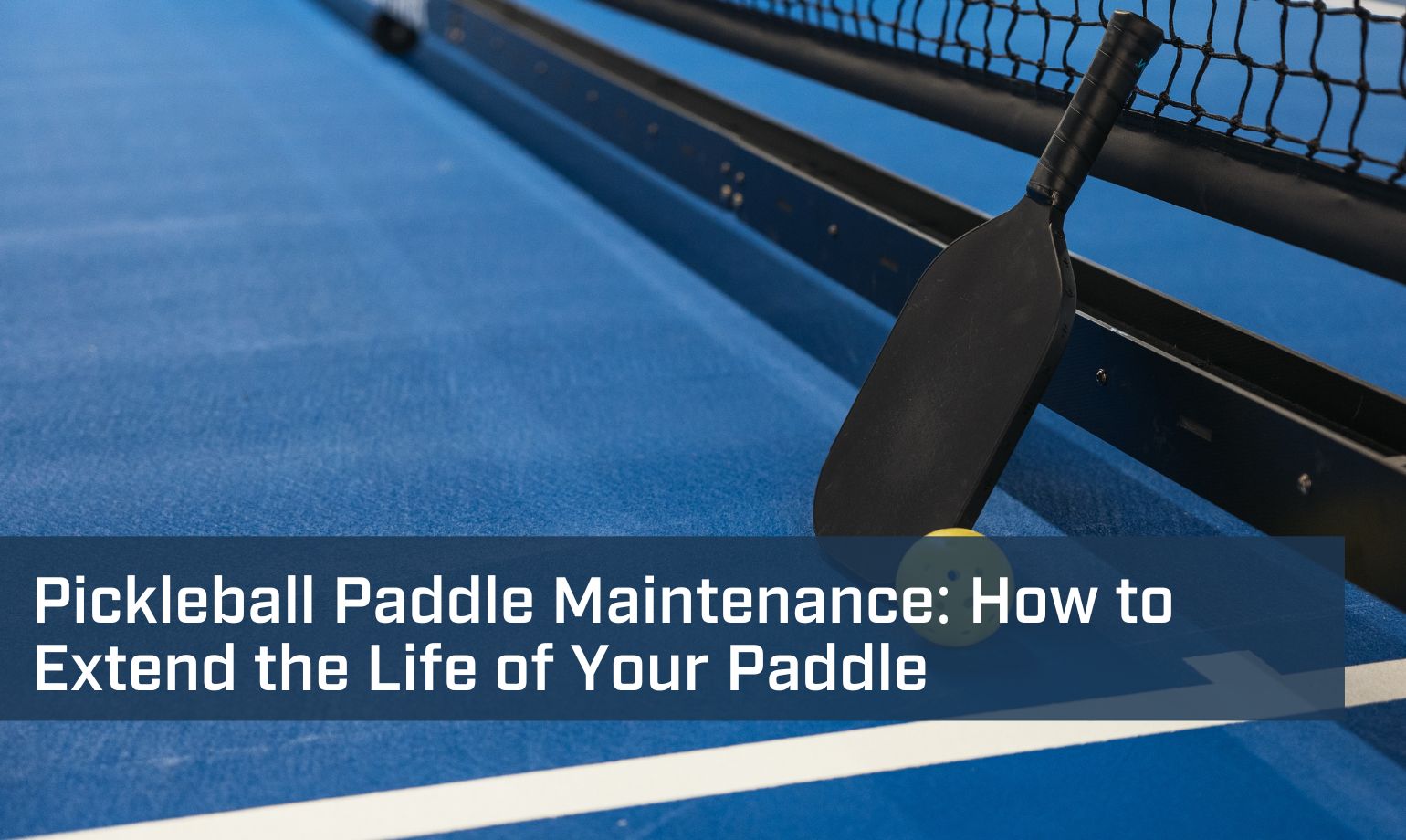
Pickleball Paddle Maintenance: How to Extend the Life of Your Paddle
Your pickleball paddle is not just another piece of sports equipment; it’s your partner in competition, your secret weapon, and, if you’re deeply attached, a cherished extension of your arm. But like any great partner, it needs a little attention and care to keep performing at its best.
Whether you picked it up online or bought it at the Power Pickleball Club pro shop, a well-maintained paddle gives you better control, spin, and power — and it lasts significantly longer than a neglected one. For the sake of your gameplay and your wallet, it’s important to learn how to clean, store, and protect your paddle so that the two of you can enjoy a long, happy life of dinking, lobbing, and dominating the court together!
Keeping Your Paddle Clean
Over time, your paddle’s surface can accumulate dirt, sweat, and oils, dulling its texture and reducing responsiveness. Fortunately, basic paddle maintenance isn’t difficult. Here’s how to keep it clean:
Gentle Wipe Down: After each game, use a lint-free cloth slightly dampened with water to wipe the paddle’s surface. This removes sweat and debris without harming the surface material.
Avoid Harsh Chemicals: Whatever you do, steer clear of household cleaners or abrasive materials. They can cause scratches or leave behind unwanted chemical residues that, over time, break down the paddle’s surface, diminishing its performance. Opt instead for warm water and a little elbow grease.
Deep Cleaning for Carbon Fiber Paddles: If you own a raw carbon fiber paddle, be aware that it requires a little extra love. Consider using a carbon fiber cleaning block, also known as a paddle eraser. Gently rub it over the surface in a circular motion to remove stubborn dirt and restore the paddle’s texture.
The Importance of Grip Care
Your paddle’s grip is where you exercise the control and technique that defines your play, and if it’s slippery, torn, or worn out, your game will suffer. Sweat naturally builds up during play, so wiping down the handle after each session is a must to keep it in good condition. However, even with the best care, grips eventually wear down. If yours feels slick or uncomfortable, it’s time for a replacement. Fresh grip tape is an easy and inexpensive fix that restores the comfort and security of your hold.
Smart Storage to Prevent Damage
How you store your paddle can shorten or lengthen its lifespan. Avoid leaving it in extreme temperatures. Heat can warp the materials, and cold can make them brittle. A hot car or a damp garage is no place for your prized drop shot darling. Instead, store it in a dry, temperature-controlled space, and place it so it’s not being pressed on or weighed down by other items.
Moisture is another silent enemy. If your paddle gets wet during play, be sure to dry it off completely before putting it away. Better yet, store it in a paddle cover to protect it from dust, accidental dings, and whatever else might threaten its pristine surface.
Handling Your Paddle with Care
Pickleball paddles are designed to strike the ball, not the ground, your opponent’s paddle, or the net post in a moment of frustration. While it’s easy to get carried away in the heat of a match, smacking your paddle against hard surfaces can lead to chips, cracks, or core damage. Be mindful of your swings and avoid using your paddle for anything other than its intended purpose.
The edge guard, which protects the paddle’s core, is another area that deserves attention. Examine it regularly for signs of wear; if you notice separation or damage, don’t ignore it. Making minor repairs along the way can extend the life of your paddle, but severe edge damage might mean it’s time for a replacement.
Knowing When to Retire Your Paddle
Even with the best care, no paddle lasts forever. When you notice a significant decline in responsiveness, control, or power despite your best maintenance efforts, it might be time for an upgrade. Visible cracks, dents, or deep surface wear are all signs that your paddle has given you its best and is ready to go to that beautiful paddle farm upstate, where retired paddles roam free.
Caring for your pickleball paddle isn’t complicated, but a little effort goes a long way. Regular cleaning, mindful storage, and gentle handling can keep your paddle in top shape, ensuring you get the most out of every game. After all, a well-maintained paddle doesn’t just last longer; it helps you play better, too. So, treat your paddle well, and it will certainly return the favor on the court.
